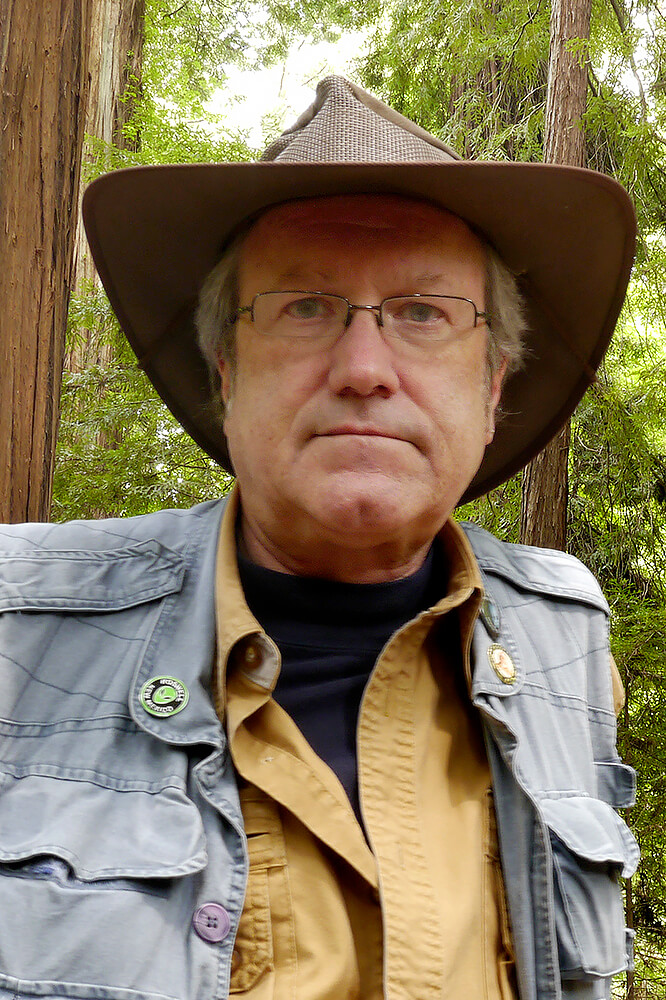Dale O'Dell lives in Prescott, Arizona and is a professional photographer and digital artist. He studied photography and philosophy in college and earned a Bachelor's of Science degree in Photography in 1982 from Sam Houston State University in Huntsville, Texas. Since 1979 he has exhibited in over two-hundred group and solo shows, his works have been exhibited and published internationally and he's written for most of the leading photographic magazines and journals. He is a consummate experimenter and innovator and works with diverse subjects in a variety of styles. He has published nineteen art books and is currently at work on number twenty.
He uses modern digital technologies to create artwork in a variety of styles. “Using the power of technology and an active imagination there are few limitations. I've produced straight documentary-style photos, advertising, editorial illustration, street photography, portraiture, landscape, infrared, night and astronomical photography as well as abstract-expressionism, impressionism and surrealism. You won't find me making the same image over and over.”
Despite their photographic origins, Dale's images are best described as 'photo/digital artworks' and are not all straight photographs. He has fully embraced the digital revolution of photography to explore expression beyond traditional photographic limitations.
Zen Cairns
A cairn is a human-made pile (or stack) of stones. The word cairn comes from the Scottish Gaelic: càrn. Cairns are used for a variety of purposes. In modern times, cairns are often erected as landmarks, a use they have had since ancient times and cairns are used as trail markers in many parts of the world. They vary in size from small stone markers to entire artificial hills, and in complexity from loose conical rock piles to delicately balanced sculptures and elaborate feats of megalithic engineering. Cairns may be painted or otherwise decorated, whether for increased visibility or for religious reasons.
The Zen Cairns came into existence as a result of researching what other photographers had done with the cairn as subject. I look at others' works to see what's already been done with the subject. This helps me to avoid repeating what others have done and (hopefully) forge my own path of originality with the subject.
As I studied the myriad of cairn photos online I saw some that made me look twice and carefully consider the laws of gravity. While I saw many examples of true 'balance artistry' when stacks of rocks seemed to be magically balanced for real, I also saw images that really did defy the law of gravity. These were 'impossible' stacks of rocks that, at first glance, looked 'real,' but they were, in fact, held together with metal rods or glue. These were probable yet impossible cairns. A quick look at these could easily fool the viewer.
Looking at the probable yet impossible cairns I thought I could create a series of physically impossible yet visually probable cairns - after all, I do have Photoshop. Almost immediately I could see the finished images in my minds-eye. I went to my sketchbook and very quickly did a series of drawings - which came to me full-blown, complete with titles! I already had the river rocks in my studio so I photographed them all twice, with lighting from two different directions, allowing me to use them in different ways in Photoshop yet keep a consistent direction of light. With the image fully-formed in my mind's eye I created a portrait-studio type background which would be lit oppositely from the rocks. I did a quick version of this background as a proof-of-concept (which worked) and then went to various paint and lighting programs to create the actual background. Interestingly, each new and improved background failed to work in the image and I ultimately ended up using the original proof-of-concept background. Sometimes you get it right the first time but you've got to do the extra work anyway so you know the first one really does work and you didn't quit too soon. For consistency I used the same background for all ten images.
Using my sketches as guides I assembled each image from individually photographed river rocks. I added shadows to simulate what it would really look like as a set in the studio. I sharpened all the rocks to enhance their texture and softened the background to create a more three-dimensional effect. I worked in black and white to emulate the luminosity of classic B&W still-life prints from the darkroom.
It is my hope that the direction of light, shadows and texture induces an emotional response of 'reality' in the viewer before the intellect of analysis informs them, 'this is not real.'
